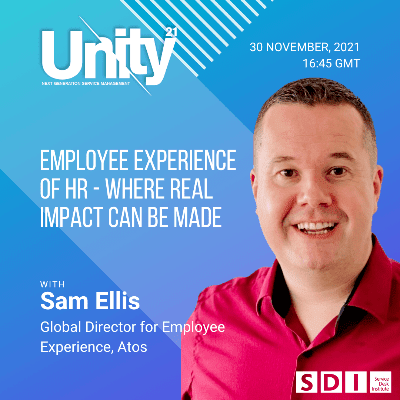
Transforming employee engagement through better tool and process adoption will help your company save money as well as valuable time and effort says Sam Ellis from Atos, speaker at UNITY21 on 30 November.
Companies know that a better employee experience means a better bottom line. Successful organizations work together with their people to create personalized, authentic, and motivating experiences that tap into purpose to strengthen individual, team, and company performance.
The HR team plays a crucial role in forming employee experience. Organizations in which HR facilitates a positive employee experience are 1.3 times more likely to report organizational outperformance, McKinsey research has shown. This has become even more important throughout the pandemic, as organizations work to build team morale and positive mindsets.
HR should facilitate and coordinate employee experience. Organizations can support this by helping HR evolve, strengthening the function’s capability so that it becomes the architect of the employee experience. Airbnb, for instance, rebranded the CHRO role as global head of employee experience. PayPal focused on HR’s capability and processes to create a better experience for employees, including coaching HR professionals on measuring and understanding that experience, and using technology more effectively.























